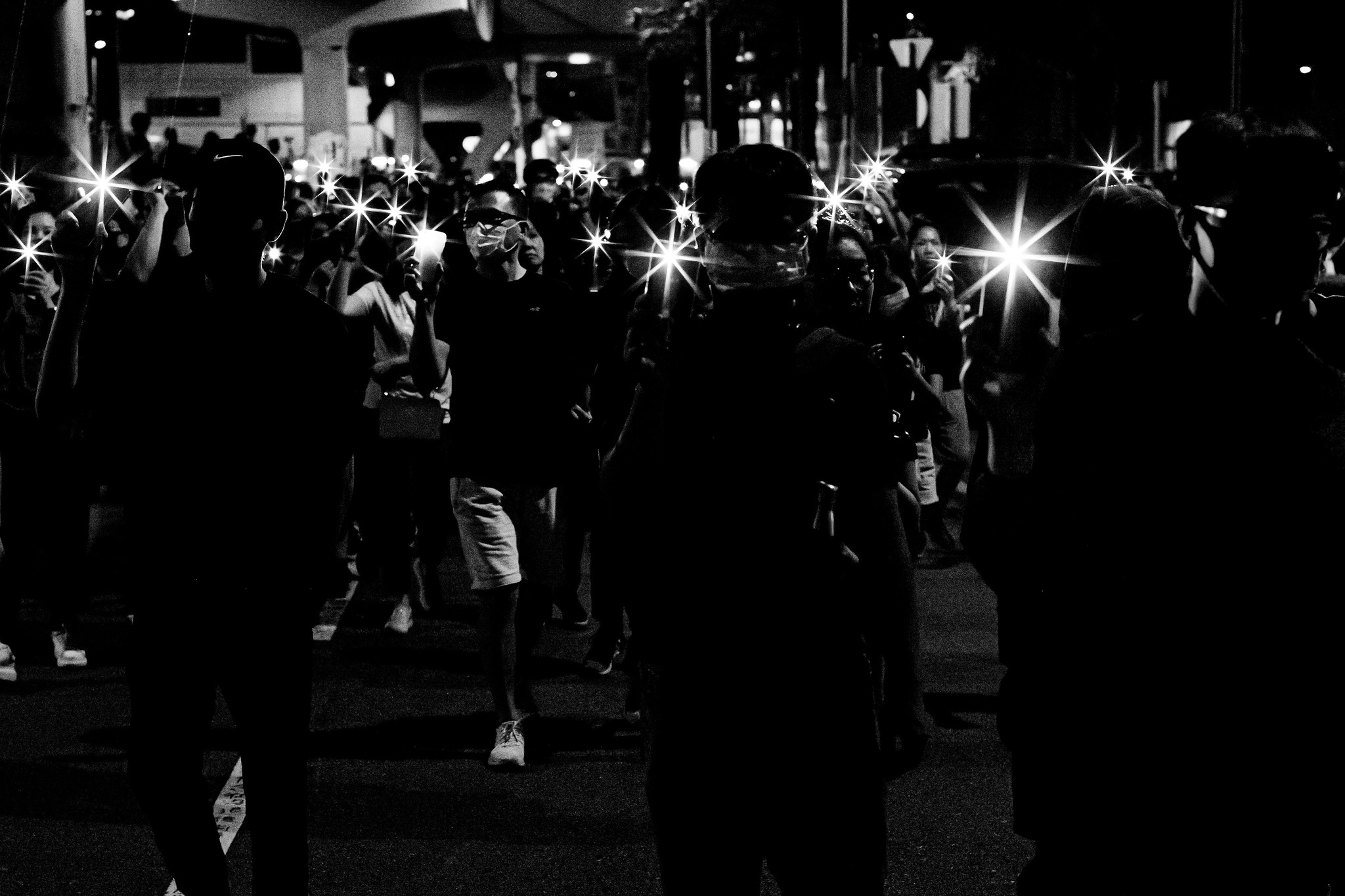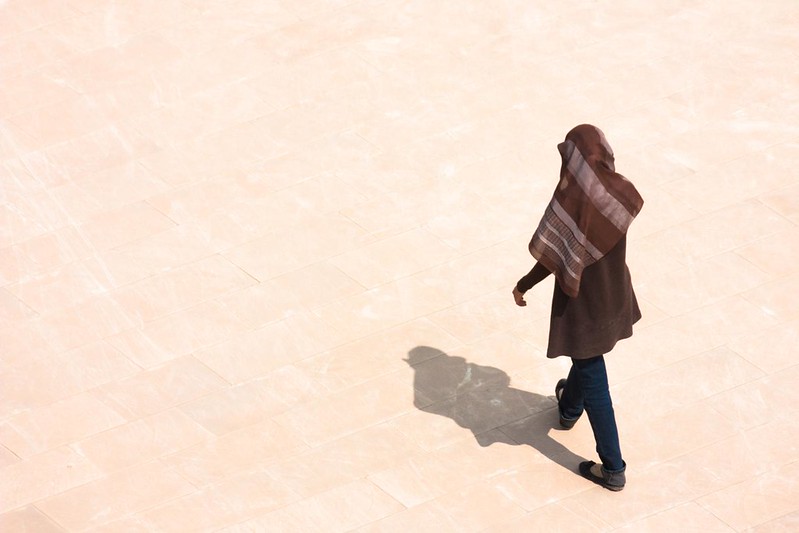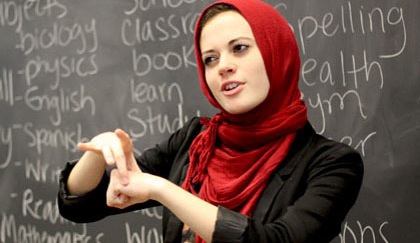Recently, a blogosphere debate erupted on headscarves/hijab among various Muslim women. The debate was preceded by physical harassment against visibly Muslim women (see this, this, this, and this). The worsened climate of Islamophobia was greeted with shock and disgust by a number of Americans. A number of non-Muslim women—Dr. Larycia Hawkins of Wheaton College, for instance—put on the headscarf as a gesture of solidarity with Muslims. While some Muslims critiqued hijab solidarity as a form of appropriation, many welcomed it as a well-intentioned and courageous gesture in difficult times.
At this particular moment, author Asra Nomani challenged the practice of hijab solidarity on the basis of patriarchal and oppressive practices that mandate the headscarf and other forms of modest clothing within such Muslim settings as Iran and Saudi Arabia. She called on Westerners to stand in solidarity against hijab. Various writers critiqued her response as a poorly timed, oppressive, and pro-imperialist argument.
The various tropes and moments in this debate are not novel.
Several years ago, I wrote an article where I pointed out the many types of Muslim women’s religiously identified clothing practices, and the diversity of situational politics that lend diverse meanings to these practices. Muslim women’s clothing is capable of bearing a broad range of meanings. To distil singular meanings for any item of clothing (such as the headscarf) across all settings is simply absurd, as it is to interpret hijab or high heels as always agentic/empowering or perpetually oppressive.
In Muslim American Women on Campus, I examine Muslim American undergraduate women’s clothing practices on a continuum of sorts—hijab, modest clothing without hijab, and so on. Women shift from point to point on the continuum at various times and in different spaces. Clothing certainly is an important facet of Muslim women’s construction of religious, American, and ethnic identities. And some parents, imams, professors, Muslim peers, and non-Muslim peers pressure Muslim American young women to wear and/or abjure hijab, modest or immodest clothing, etc. Clothing and hijab are certainly a big deal, but not always in the sense that Asra Nomani interprets them. Often they are stressful in the opposite sense.
In Chapter 4 of my book, I discuss—among other things—the clothing and identity strategies of a young freshman, Latifa. While Latifa chose to wear hijab (with the enthusiastic support of her parents!) she did not appreciate the imam’s vociferous exhortations that all Muslim women wear hijab, nor did she take kindly to his verbal attacks on women who did not.
Latifa, however, also attended a class taught by “Dr. Anwar,” a liberal Muslim professor, who argued strongly against the practice of head covers, and, like Nomani, criticized it as an unnecessarily conspicuous and isolating cultural practice that was, moreover, lacking in any religious foundation. Latifa was stuck between the imam’s demands to conform to specific “Islamic” clothing and the professor’s demands to culturally assimilate and conform to American sartorial practices. Earlier in Chapter 4, I discuss how wearing hijab in a class on Islam and gender sometimes had a silencing effect on Latifa, as she observed her non-Muslim friends pick apart Muslim women’s dilemmas and struggles, and considered how they must interpret her own sartorial practices in an academic setting. Dr. Anwar’s claims parallel Asra Nomani’s arguments regarding hijab, and have a similar political impact on participants in the debate.
While oppressive patriarchal practices continue to be a concern in Muslim communities, hijab is not the only such practice. A singular focus on clothing alone detracts from attention to important political gender struggles in various settings. In an atmosphere of virulent Islamophobia, especially against hijab wearers already stigmatized for their visible religiosity, is to enable Trump-flavored hate. As Darakshan Raja says, “There is a long history of Muslim feminists such as Fatima Mernissi who have challenged the patriarchy and violence within Muslim communities without furthering imperialistic, Islamophobic, and white supremacist agendas.”
Excerpt from Muslim American Women on Campus pp. 115-116:
Latifa was occasionally ambivalent about hijab and discomfited both by secular Muslim critiques of hijab and by the orthodox preoccupation with Muslim women’s covering. She found irritating and “superficial” the local imam’s bitter attack on progressive Muslim critiques of hijab. Yet because she was hijabi after all, Latifa dreaded the discussion on hijab that would inevitably crop up in Dr. Anwar’s Islamic theology class. . . .
Latifa: [Dr. Anwar will] say, “It’s not written in the Qurʾan, and people [hijabis] follow pre-Islamic tradition. . . . It’s not a religious notion, and you’re not supposed to stick out like a sore thumb.” . . . Yes, [she thinks] you’re just supposed to assimilate in your community. So I think I’ll stick out in my class!
Latifa could not help but “feel marginalized when [Dr. Anwar was] talking about the people who are wearing hijab, that it’s not an act of faith,” and that hijab was a purely cultural practice of a bygone era, not rooted in Islamic theology, a practice of under-educated and culturally clumsy Muslims. Moreover, Dr. Anwar avowed, hijabis were in contravention of the Islamic juristic principle of ʿurf (respect of local customs). Dr. Anwar’s claim fed into a cultural assimilationist perspective within a predominantly white campus, implying that a Muslim woman who “stuck out like a sore thumb” by her own choice deserved to be “sore” and that Muslims ought to “tone down” their identities.[1]
While I, as a progressive Muslim, have a soft spot for some of Dr. Anwar’s arguments on religion, I am concerned about the absence of hijabis’ voices from Dr. Anwar’s discourse on hijab and how she closed up the democratic possibilities of internal religious pluralism by voicing a singular perspective on an essentially contested matter. . . .
Much as Latifa was stuck between the conservative imam and the modernist professor, Muslim American women are often torn between the demands of conservative Muslims and those of feminists, progressives, or secularists. In many ways, they continue to resist the expectations of fellow Muslims, both traditional and liberal, and of their non-Muslim peers.
Excerpt from Muslim American Women on Campus: Undergraduate Social Life and Identity by Shabana Mir. Copyright © 2014 by the University of North Carolina Press.
[separator type=”thin”]
Shabana Mir is assistant professor of anthropology at American Islamic College. Her book Muslim American Women on Campus: Undergraduate Social Life and Identity is now available. Follow her on Twitter @ShabanaMir1 .
This post originally appeared as a guest post on the UNC Press blog.
(Photo: IslamiCommentary.Org)

















